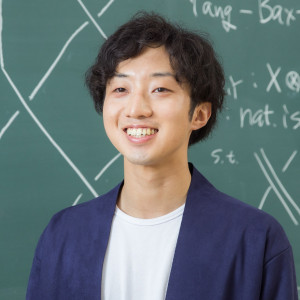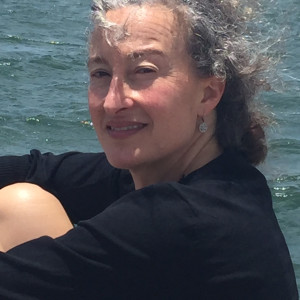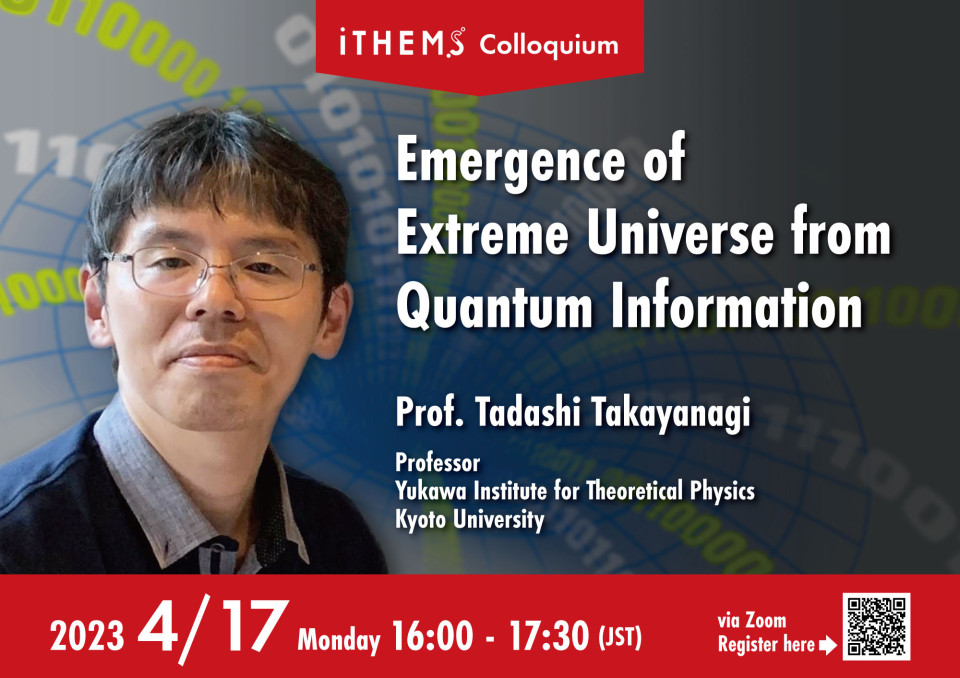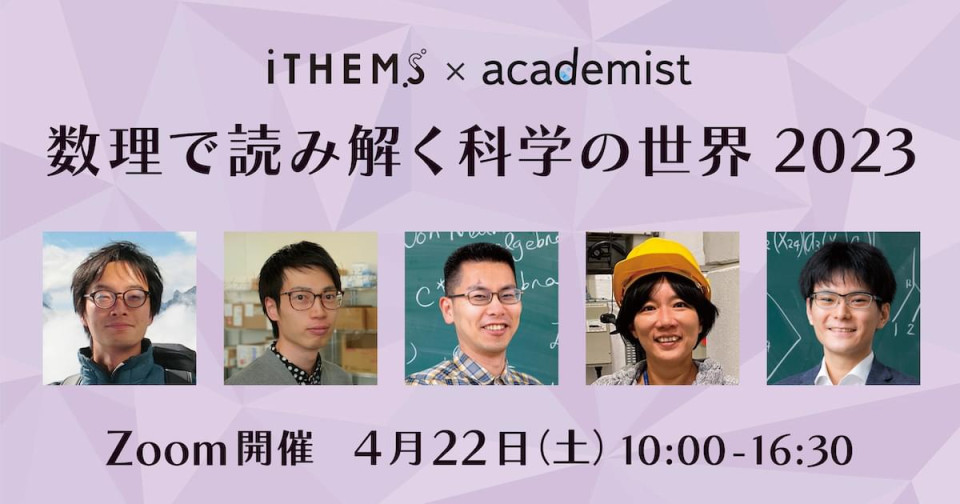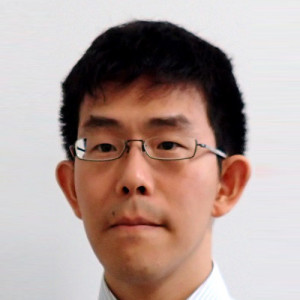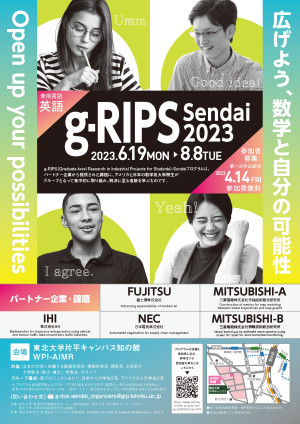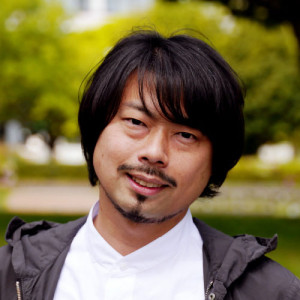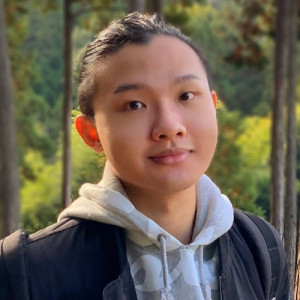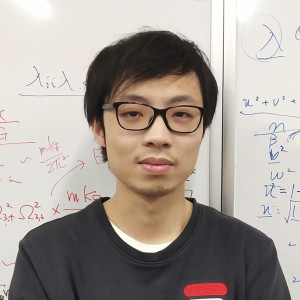Volume 245
Back to Newsletter List
Upcoming Events
Seminar
Introduction to the Renormalization group method as a powerful reduction method of dynamics
April 10 (Mon) 10:30 - 12:00, 2023
Teiji Kunihiro (Emeritus Professor, Kyoto University)
Extracting effective slow dynamics with fewer degrees of freedom from a complex system with many degrees of freedom is of basic importance in all areas of Science. Typical examples include the derivation of the amplitude and phase dynamics from nonlinear oscillators, that of the Boltzmann equation from Hamilton dynamics, which is further reduced to fluid dynamics and so on. The purpose of this talk is to give an elementary introduction to the renormalization group (RG) method as a powerful reduction method of differential (difference) equations in terms of the notion of envelopes. Some simple examples will be worked out in this method, which include the van der Pol (Rayleigh) equation with its discrete analog and a generic system with a bifurcation. In the final part, we list up various examples to which the RG method has been successfully applied.
Venue: Seminar Room #359, 3F Main Research Building, RIKEN / via Zoom
Event Official Language: English
Seminar
iTHEMS Math Seminar
Frobenius algebras associated with the α-induction for equivariantly braided tensor categories
April 10 (Mon) 14:00 - 16:30, 2023
Mizuki Oikawa (Ph.D. Student / JSPS Research Fellow DC, Graduate School of Mathematical Sciences, The University of Tokyo)
In this talk, I would like to introduce my work https://arxiv.org/abs/2303.11845. In the first half of the talk, I will give an introduction of tensor categories. In the latter half, I will explain about my construction of some tensor categories and Frobenius algebras.
Reference
- Mizuki Oikawa, Frobenius algebras associated with the α-induction for equivariantly braided tensor categories, arXiv: 2303.11845
Venue: Seminar Room #359, 3F Main Research Building, RIKEN / via Zoom
Event Official Language: English
Seminar
iTHEMS Math Seminar
Quantum modularity of quantum invariants and related techniques
April 11 (Tue) 13:00 - 15:30, 2023
Yuya Murakami (JSPS Research Fellow PD, Faculty of Mathematics, Kyushu University)
In this talk, I will present my recent work[1] and related research. In the first half of the talk, I will provide an overview of the concept of quantum modularity of quantum invariants, and briefly discuss my main result. In the second half, I will provide a more detailed explanation of my main result and the proof.
Reference
- Yuya Murakami, A proof of a conjecture of Gukov-Pei-Putrov-Vafa, arXiv: 2302.13526
Venue: Seminar Room #359, 3F Main Research Building, RIKEN / via Zoom
Event Official Language: English
Seminar
Co-hosted by iTHEMS
An overview on the nuclear equation of state studied from ground and collective excited state properties of nuclei
April 12 (Wed) 13:30 - 15:00, 2023
Xavier Roca-Maza (Associate Professor, Department of Physics, University of Milan, Italy)
This contribution reviews a selection of available constraints to the nuclear equation of state (EoS) around saturation density from nuclear structure calculations on ground and collective excited state properties of atomic nuclei [1]. It concentrates on predictions based on self-consistent mean-field calculations, which can be considered as an approximate realization of an exact energy density functional (EDF). Mostly, EDFs are currently derived from effective interactions commonly fitted to nuclear masses, charge radii and, in many cases, also to pseudo-data such as nuclear matter properties. Although in a model dependent way, EDFs constitute nowadays a unique tool to reliablyand consistently access bulk ground state and collective excited state properties of atomic nuclei along the nuclear chart as well as the EoS. The impact on the EoS of the new CREx [2] and PREx [3] measurments of the parity violating asymmetry (ground state observable) in 48Ca and 208Pb, respectively, will be also discussed [4,5] and compared to previously presented results on collective excitations. As the main conclusion, the isospin dependence of the nuclear EoS around saturation density and, to a lesser extent, the nuclear matter incompressibility remain to be accurately determined. Experimental and theoretical efforts in finding and measuring observables specially sensitive to the EoS properties are of paramount importance, not only for low-energy nuclear physics but also for nuclear astrophysics applications.
References
- X. Roca-Maza, N. Paar, Nuclear equation of state from ground and collective excited state properties of nuclei, Prog. Part. Nucl. Phys. 101, 96 (2018), doi: 10.1016/j.ppnp.2018.04.001
- D. Adhikari et al. (CREx collaboration), Precision Determination of the Neutral Weak Form Factor of 48Ca, Phys. Rev. Lett. 129, 042501 (2022), doi: 10.1103/PhysRevLett.129.042501
- S. Abrahamyan et al. (HAPPEX and PREX Collaborations), New Measurements of the Transverse Beam Asymmetry for Elastic Electron Scattering from Selected Nuclei, Phys. Rev. Lett. 109, 192501 (2012), doi: 10.1103/PhysRevLett.109.192501
- P.-G. Reinhard, X. Roca-Maza, W. Nazarewicz, Information Content of the Parity-Violating Asymmetry in 208Pb, Phys. Rev. Lett. 127, 232501 (2021), doi: 10.1103/PhysRevLett.127.232501
- P.-G. Reinhard, X. Roca-Maza, W. Nazarewicz, Combined Theoretical Analysis of the Parity-Violating Asymmetry for 48Ca and 208Pb, Phys. Rev. Lett. 129, 232501 (2022), doi: 10.1103/PhysRevLett.129.232501
Venue: 2F Large Meeting Room, RIBF Building, RIKEN Wako Campus / via Zoom
Event Official Language: English
Seminar
iTHEMS Biology Seminar
Why are cell populations maintained via multiple compartments?
April 13 (Thu) 10:00 - 11:00, 2023
Carmen Molina-París (Researcher, Theoretical Biology and Biophysics, Los Alamos National Laboratory, USA)
We consider the maintenance of “product” cell populations from “progenitor” cells via a sequence of one or more cell types, or compartments, where each cell’s fate is chosen stochastically. If there is only one compartment then large amplification, that is, a large ratio of product cells to progenitors comes with disadvantages. The product cell population is dominated by large families (cells descended from the same progenitor) and many generations separate, on average, product cells from progenitors. These disadvantages are avoided using suitably-constructed sequences of compartments: the amplification factor of a sequence is the product of the amplification factors of each compartment, while the average number of generations is a sum over contributions from each compartment. Passing through multiple compartments is, in fact, an efficient way to maintain a product cell population from a small flux of progenitors, avoiding excessive clonality and minimising the number of rounds of division en route. We analyse the possible descendants of one progenitor cell, families of cells that journey through the sequence of compartments. We find that the ability of product cells to perform their function may be negatively affected by the number of rounds of cell division that separates them from their progenitor, because every round of division brings with it a risk of mutation.
Venue: via Zoom
Event Official Language: English
Colloquium
iTHEMS Colloquium
Emergence of Extreme Universe from Quantum Information
April 17 (Mon) 16:00 - 17:30, 2023
Tadashi Takayanagi (Professor, Yukawa Institute for Theoretical Physics, Kyoto University)
Recently, a new interpretation of gravitational spacetime in terms of quantum entanglement has been obtained. The idea of holography in string theory provides a simple geometric computation of entanglement entropy. This generalizes the well-known Bekenstein-Hawking formula of black hole entropy and strongly suggests that a gravitational spacetime consists of many qubits with quantum entanglement. Also a new progress on black hole information problem has been made recently by applying this idea. I will explain these developments in this colloquium.
Venue: via Zoom
Event Official Language: English
Seminar
ABBL-iTHEMS Joint Astro Seminar
Towards EeV Neutrino Astronomy with GRAND
April 18 (Tue) 14:00 - 15:15, 2023
Kumiko Kotera (Director of Research, Institute of Astrophysics, France)
We are living exciting times: we are now able to probe the most violent events of the Universe with diverse messengers (cosmic rays, neutrinos, photons and gravitational waves). One challenge to complete the multi-messenger picture resides in the highest energies, as no ultra-high energy neutrinos have been observed yet. This challenge could be undertaken by the GRAND (Giant Radio Array for Neutrino Detection) project, which aims at detecting ultra-high energy particles, with a colossal array of 200'000 antennas over 200'000 km2, split into ~20 sub-arrays of ~10'000 km2 deployed worldwide. In this talk, we will present preliminary designs and simulation results, plans for the ongoing, staged approach to construction, and the rich research program made possible by the proposed sensitivity and angular resolution.
Venue: Common Room #246-248, 2F Main Research Building, RIKEN / via Zoom
Event Official Language: English
Seminar
iTHEMS Biology Seminar
Machine learning predicts biological system evolution by gene gains and losses
April 20 (Thu) 16:00 - 17:00, 2023
Naoki Konno (Ph.D. Student, Department of Biological Sciences, Graduate School of Science, The University of Tokyo)
Prediction of evolution is a fundamental goal of biology with a potential impact on strategic pathogen control and genome engineering. While predictability of short-term and sequence-level evolution has been investigated, that of long-term and system-level evolution has not been systematically examined. Here, we show that evolution of metabolic systems by gene gains and losses is generally predictable by applying ancestral gene content reconstruction and machine learning techniques to ~3000 bacterial genomes. Our framework, Evodictor, successfully predicted gene gain and loss events at the branches of the reference phylogenetic tree, suggesting universally shared evolutionary pressures and constraints on metabolic systems. I herein present the mathematical model of Evodictor and our findings on evolutionary rules from physiological and ecological aspects. I will further discuss potential versatility of Evodictor approach to analyze various diversification processes along branching lineage trees, not only evolution, but also developmental processes.
Reference
- Naoki Konno and Wataru Iwasaki, Machine learning enables prediction of metabolic system evolution in bacteria, Science Advances (2023), doi: 10.1126/sciadv.adc9130
Venue: via Zoom
Event Official Language: English
Special Lecture
iTHEMS x academist Online Event "World of Mathematical Sciences 2023"
April 22 (Sat) 10:00 - 16:30, 2023
Takumi Doi (Senior Research Scientist, RIKEN Interdisciplinary Theoretical and Mathematical Sciences Program (iTHEMS))
Ryo Namba (Senior Research Scientist, RIKEN Interdisciplinary Theoretical and Mathematical Sciences Program (iTHEMS))
Yuto Moriwaki (Special Postdoctoral Researcher, RIKEN Interdisciplinary Theoretical and Mathematical Sciences Program (iTHEMS))
Kyosuke Adachi (Special Postdoctoral Researcher, Nonequilibrium Physics of Living Matter RIKEN Hakubi Research Team, RIKEN Center for Biosystems Dynamics Research (BDR))
Natsuki Tomida (Specially Appointed Assistant Professor, Center for Science Adventure and Collaborative Research Advancement (SACRA), Graduate School of Science, Kyoto University)
Venue: via Zoom
Event Official Language: Japanese
Seminar
NEW WG Seminar
Quantum transport with cold atoms
May 10 (Wed) 13:30 - 15:00, 2023
Shun Uchino (Researcher, Advanced Science Research Center, Japan Atomic Energy Agency (JAEA))
Quantum transport occurring through a mesoscopic conduction region allows us to extract interesting quantum many-body phenomena. For decades, solid-state systems have been the playground of such transport and revealed nontrivial outcomes such as the conductance quantization in a quantum point contact system and the fractional charge measurement in a fractional quantum Hall system. More recently, cold atoms trapped in the vacuum have served as the complementary system to study the quantum transport phenomena.
In this seminar, I wish to discuss the recent progresses of quantum transport with cold atoms. The great advantages of those systems are that one can control quantum statistics, inter-particle interactions, dissipation, and dimensions. I try to show that such controllability enables to explore a regime of quantum transport that has yet to be reached with solid-state materials, including transport of bosons, dissipation effect in transport, and transport with synthetic dimensions.
Venue: Seminar Room #359, 3F Main Research Building, RIKEN / via Zoom
Event Official Language: English
Seminar
ABBL-iTHEMS Joint Astro Seminar
X-ray study on the synchrotron emission in Kepler's SNR
May 19 (Fri) 14:00 - 15:15, 2023
Vincenzo Sapienza (Ph.D. Student, Department of Physics, Graduate School of Science, The University of Tokyo)
Synchrotron X-ray emission in young supernova remnants (SNRs) is a powerful diagnostic tool to study the population of high energy electrons accelerated at the shock front.
We performed a spatially resolved spectral analysis of the young Kepler's SNR, where we identify two different regimes of particle acceleration.
In the north, where the shock interacts with a dense circumstellar medium (CSM), we found a more efficient acceleration than in the south, where the shock velocity is higher and there are no signs of shock interaction with dense CSM.
We also studied the temporal evolution of the synchrotron flux, from 2006 to 2014.
A number of regions show a steady synchrotron flux and equal cooling and acceleration times.
However, we found some regions where we measured a significant decrease in flux from 2006 to 2014.
Our results display a coherent picture of the different regimes of electron acceleration observed in Kepler's SNR.
Also If I will have time during the seminar it will be nice to present also some preliminary results I will have in the SN 1987A project.
Venue: Seminar Room #359, 3F Main Research Building, RIKEN / via Zoom
Event Official Language: English
Seminar
iTHEMS Theoretical Physics Seminar
Spectral correlations and scrambling dynamics in Sachdev-Ye-Kitaev type models
May 30 (Tue) 13:30 - 15:00, 2023
Masaki Tezuka (Assistant Professor, Division of Physics and Astronomy, Graduate School of Science, Kyoto University)
Note: Due to unexpected trouble, we have made the decision to postpone the seminar scheduled for February 21 to May 30. Sorry for the trouble.
Abstract:
The Sachdev-Ye-Kitaev (SYK) model, proposed in 2015, is a quantum mechanical model of N Majorana or complex fermions with all-to-all random four-body interactions. The model has attracted significant attention over the years due to its features such as the existence of the large-N solution with maximally chaotic behavior at low temperatures and holographic correspondence to low-dimensional gravity.
The sparse version of the SYK model reproduces essential features of the original model for reduced numbers of disorder parameters. We recently proposed [1] a further simplification, where we set the nonzero couplings to be +1 or -1 rather than sampling from a continuous distribution such as Gaussian. This binary-coupling model exhibits strong correlations in the spectrum, as observed in the spectral form factor, more efficiently in terms of the number of nonzero terms than in the Gaussian distribution case. We also discuss the scrambling dynamics with the binary-coupling sparse SYK model, comparing the model with the original model as well as the SYK model with random two-body terms [2], where the localization of the many-body eigenstates in the Fock space has been quantitatively studied [3,4].
References
- Masaki Tezuka, Onur Oktay, Enrico Rinaldi, Masanori Hanada, and Franco Nori, Binary-coupling sparse Sachdev-Ye-Kitaev model: An improved model of quantum chaos and holography, Phys. Rev. B 107, L081103 (2023), doi: 10.1103/PhysRevB.107.L081103, arXiv: 2208.12098
- Antonio M. García-García, Bruno Loureiro, Aurelio Romero-Bermúdez, and Masaki Tezuka, Chaotic-Integrable Transition in the Sachdev-Ye-Kitaev Model, Phys. Rev. Lett. 120, 241603 (2018), doi: 10.1103/PhysRevLett.120.241603
- Felipe Monteiro, Tobias Micklitz, Masaki Tezuka, and Alexander Altland, Minimal model of many-body localization, Phys. Rev. Research 3, 013023 (2021), doi: 10.1103/PhysRevResearch.3.013023
- Felipe Monteiro, Masaki Tezuka, Alexander Altland, David A. Huse, and Tobias Micklitz, Quantum Ergodicity in the Many-Body Localization Problem, Phys. Rev. Lett. 127, 030601 (2021), doi: 10.1103/PhysRevLett.127.030601, arXiv: 2012.07884
Venue: Hybrid Format (3F #359 and Zoom), Main Research Building, RIKEN Wako Campus
Event Official Language: English
School
Co-hosted by iTHEMS
g-RIPS-Sendai 2023
June 19 (Mon) - August 8 (Tue) 2023
The Research in Industrial Projects for Students (RIPS) program has been held at the Institute for Pure & Applied Mathematics (IPAM) of the University of California, Los Angeles. In 2018, the Advanced Institute for Materials Research (AIMR) at Tohoku University in Sendai launched the g-RIPS-Sendai program in collaboration with IPAM, targeting graduate-level students in mathematical science and related disciplines. Participants from the U.S. and Japan will work on cross-cultural teams on research projects designed by industrial partners. The projects are expected to be of great interest to the partners and offer stimulating challenges to students. For more information on this year's g-RIPS-Sendai 2023, please visit the program website at the related link.
Organizers:
Research Alliance Center for Mathematical Science (RACMaS), Tohoku University
Tohoku Forum for Creativity (TFC), Tohoku University
Advanced Institute for Materials Research (AIMR), Tohoku University
In cooperation with the following organizations:
RIKEN Interdisciplinary Theoretical and Mathematical Sciences Program (iTHEMS)
Institute for Pure & Applied Mathematics (IPAM), UCLA
Venue: Advanced Institute for Materials Research (AIMR), Tohoku University
Workshop
Supported by iTHEMS
6th Workshop on Virus Dynamics
July 4 (Tue) - 6 (Thu) 2023
Catherine Beauchemin (Deputy Program Director, RIKEN Interdisciplinary Theoretical and Mathematical Sciences Program (iTHEMS))
Shingo Iwami (Professor, Graduate School of Science, Nagoya University)
The Workshop on Virus Dynamics is an international meeting held every 2 years. It brings virologists, immunologists, and microbiologists together with mathematical and computational modellers, bioinformaticians, bioengineers, virophysicists, and systems biologists to discuss current approaches and challenges in modelling and analyzing different aspects of virus and immune system dynamics, and associated vaccines and therapeutics. This 6th version of the workshop builds on the success of previous ones held in Frankfurt (2013), Toronto (2015), Heidelberg (2017), Paris (2019) and virtually (2021). It is supported by the Interdisciplinary Theoretical and Mathematical Sciences (iTHEMS) program at RIKEN, by Nagoya University, and by the Japan Science and Technology Agency. Up-to-date information and registration is available via the website. The workshop is for in-person participation only (no virtual or hybrid option).
Venue: Noyori Conference Hall, Higashiyama Campus, Nagoya University
Event Official Language: English
Seminar
ABBL-iTHEMS Joint Astro Seminar
A dynamical model for IRAS 00500+6713: the remant of a type Iax supernova SN1181 hosting a double degenerate merger product WD J005311
July 7 (Fri) 14:00 - 15:15, 2023
Takatoshi Ko (Ph.D. Student, Research Center for the Early Universe (RESCEU), The University of Tokyo)
Iras 00500+6713 is a bright nebula in the infrared, and X-ray observations show it consists of diffuse region and strong illuminated central region. In addition, optical spectral observations have recently revealed that fast wind with about 15,000 km/s is blowing from the massive white dwarf at the center. The properties of this nebula and white dwarf are very similar to those theoretically predicted by the binary white dwarf merger. In addition, its position on the celestial sphere and the extent make it a prime candidate for the remnant of SN 1181, a historical supernova. In this study, we propose that such a multilayered structure is formed by the collision between the remnant of SN 1181 and the stellar wind blowing from the central white dwarf, and succeeded in constructing a model that is consistent with the multi-wavelength observations. The results show that the progenitor of SN 1181 is a binary white dwarf with 1.3-1.9 solar mass and that their merger triggered an explosion that ejected mass with 0.2-0.6 solar mass to form the present object. The extent of the X-ray source concentrated in the center reveals that these winds began blowing within the last 30 years, and we will discuss this property as well.
Venue: Seminar Room #359, 3F Main Research Building, RIKEN / via Zoom
Event Official Language: English
Lecture
Higher Algebra in Geometry
July 31 (Mon) - August 10 (Thu) 2023
Hiro Lee Tanaka (Assistant Professor, Department of Mathematics, Texas State University, USA)
In these lectures, we will shed light on modern tools of higher algebra, where the traditional structures of algebra yield themselves only after controlled deformations. We will introduce infinity-categories, spectra, operads, and other standard tools of the last decade. The main applications will be to encode various higher-algebraic structures that inevitably arise in, and shed light on, geometry and topology. If time permits, we will illustrate how spectra naturally arise in geometric invariants.
The audience is imagined to consist of mathematicians interested in applications of infinity-categorical tools -- so a broad range of geometers (including topologists) and algebraists. From Lecture Two onward, I will assume basic knowledge of algebraic topology (e.g., the material of Hatcher) and homological algebra.
These lectures will be held between July 31 and August 10, each from 10:30 to 12:00, for a total of 8 lectures.
1st Week: Jul 31(mon), Aug 1(tue) - 3(thu)
- Introduction to ideas of higher algebra in geometry, for a general audience.
- Introduction to infinity-categories and to spectra.
2nd Week: Aug 7(mon) - 10(thu)
- Examples in geometry and topology, including invariants of Legendrian links and generating functions.
- Future Directions.
Profile:
Hiro Lee Tanaka is an assistant professor in the Department of Mathematics. After receiving his Ph.D. from Northwestern University and completing postdoctoral work at Harvard University, he conducted research at the Mathematical Sciences Research Institute in Berkeley, California, and at the Isaac Newton Institute in Cambridge, England. His research aims to fuse the higher structures in modern algebra with geometries emerging from both classical mechanics and supersymmetric field theories. Beyond research, Tanaka engages in efforts to create more equitable and supportive environments throughout the mathematics community.
References
- Jacob Lurie, Higher Topos Theory (PDF 4.8MB), doi: 10.1515/9781400830558
- Jacob Lurie, Higher Algebra (PDF 6.9MB)
- Kerodon - an online resource for homotopy-coherent mathematics
- Jacob Lurie, Hiro Lee Tanaka, Associative algebras and broken lines, arXiv: 1805.09587
- Jacob Lurie, On the Classification of Topological Field Theories, arXiv: 0905.0465
- Oleg Lazarev, Zachary Sylvan, Hiro Lee Tanaka, The infinity-category of stabilized Liouville sectors, arXiv: 2110.11754
- Araminta Amabel, Artem Kalmykov, Lukas Müller, Hiro Lee Tanaka, Lectures on Factorization Homology, Infinity-Categories, and Topological Field Theories, arXiv: 1907.00066
- David Ayala, John Francis, Hiro Lee Tanaka, Factorization homology of stratified spaces, arXiv: 1409.0848
- David Nadler, Hiro Lee Tanaka, A stable infinity-category of Lagrangian cobordisms, arXiv: 1109.4835
- David Gepner, An Introduction to Higher Categorical Algebra, arXiv: 1907.02904
Venue: #435-437, Main Research Building, RIKEN Wako Campus / via Zoom
Event Official Language: English
Person of the Week
Self-introduction: Zixia Wei
2023-04-07
My name is Zixia Wei, and I got my Ph.D. from Yukawa Institute, Kyoto University in March 2023. I work on many different aspects of the AdS/CFT correspondence. The AdS/CFT correspondence relates a gravitational theory to a non-gravitational theory in a lower-dimensional system. Recently, I am interested in studying statistical physics with the help of the AdS/CFT correspondence. Thermal states in non-gravitational systems, which are often the targets of statistical physics, are related to black holes via the AdS/CFT correspondence. Obvious observations in black holes are sometimes nontrivial when translated back to statistical systems. I am working on making nontrivial conjectures in general statistical systems by considering black holes and then trying to prove them back in statistical systems.
Person of the Week
Self-introduction: Che-Yu Chen
2023-04-06
Hi, my name is Che-Yu Chen, a Taiwanese researcher, joining RIKEN iTHEMS as an SPDR in April 2023. I got my Ph.D. in Physics from National Taiwan University in 2019. After my graduation, I stayed as a postdoc at LeCosPA-NTU (2019-2020) and then became an AS postdoc at the Institute of Physics, Academia Sinica (2020-2023), before coming to RIKEN.
My interest is mainly in gravitational physics, including modified gravity and the phenomenological aspects of quantum gravity. In particular, I'm currently working on using state-of-the-art black hole observations to test general relativity (GR), or even to probe putative non-GR physics. The direct detection of gravitational waves emitted from binary black hole mergers, and the images of supermassive black holes, have ushered in a completely new era in which directly probing spacetimes near black holes becomes possible. There are several interesting non-GR physics, some of which could even be motivated by quantum gravitational effects. These non-GR physics could induce non-trivial or even unique imprints on gravitational waveforms and black hole images, and hence can possibly be tested in the future. A better understanding of this topic can tell us how well GR describes such extreme spacetime regimes, and if it were to be modified, which direction is more observationally preferred. I'm looking forward to the fruitful discussions with the iTHEMS members in the future.
Person of the Week
Self-introduction: Tomoya Nagai
2023-04-05
My name is Tomoya Nagai. I joined as a coordinator in April 2023. I started working after getting the Ph.D. in astrophysics and have worked in science communication, R&D strategy development, research funding and R&D management. Until March 2023, I worked at KEK and Kobe University, where I was manager of research projects using the supercomputers “Fugaku". I will do my best to help you in your research.
Person of the Week
Self-introduction: Tingyu Zhang
2023-04-05
My name is Tingyu Zhang, and I joined iTHEMS as a junior research associate in April 2023. Now I am involved in a PhD program in physics at the University of Tokyo. I mainly focus on the study of quantum many-body systems and non-equilibrium physics. Specifically I’m now studying the transport phenomena in cold atomic systems, through Green’s function methods and the perturbation theory. I’m looking forward to discussing physics with other researchers in the future.
Paper of the Week
Week 2, April 2023
2023-04-06
Title: Atiyah-Hirzebruch spectral sequence for topological insulators and superconductors: $E_2$ pages for 1651 magnetic space groups
Author: Ken Shiozaki, Seishiro Ono
arXiv: http://arxiv.org/abs/2304.01827v1
Title: Frobenius algebras associated with the $α$-induction for equivariantly braided tensor categories
Author: Mizuki Oikawa
arXiv: http://arxiv.org/abs/2303.11845v1
Title: Involutions, links, and Floer cohomologies
Author: Hokuto Konno, Jin Miyazawa, Masaki Taniguchi
arXiv: http://arxiv.org/abs/2304.01115v1
If you would like to cancel your subscription or change your email address,
please let us know via our contact form.
Copyright © iTHEMS, RIKEN. All rights reserved.


